I had a pretty vague idea about where we were and an even vaguer idea about how we could get out of there. It was midday on a Sunday; I was sitting on a plastic chair in a small shaded area in a desolate village market; I needed to go to the bathroom, I was hungry, and the heat was intense. Almost no locals were around. A few meters from me, D., the Australian I had met on the bus trip to Phongsali, was slumped in his chair, resigned and silent, fiddling with his phone. By tourist standards, we had veered off the map: the village had no guesthouse, restaurant or visitor information. It was probably rare that tourists made it there.
D. took out his wallet, looked at his banknotes and told me, with a voice that worsened his anxiety, that he thought someone had stolen part of his money during our bus ride earlier that day. I tried to reassure him that I had had a good view from my seat behind him, and no one had even attempted that.
That morning, we had left Phongsali to try our luck with a voyage that, from the little information available online, promised unforgettable views as much as it promised uncertain logistics. We were going to travel south, down the Nam Ou river, a tributary of the Mekong, to Muang Khua, a village that roughly marks the northern limit of the tourist trail in Laos. There were no direct car roads (the whole area being mostly untouched jungle), and locals used small wooden boats—sampans—to get around. But based on recent accounts, the voyage down the river got cut off at some undefined point, and there were rumours that it would not even be possible to travel down the river anymore.
Perhaps I had persuaded D. to accompany me on this voyage, or perhaps this trip was already part of his plans—I don’t remember. Any apprehension about the journey down the Nam Ou had slowly melted away thanks to the mutual trust we had developed while exploring Phongsali together during our time there. We were ready to take the leap.
Early that Sunday morning, we asked around the locals and found a tuk tuk driver to take us to a little known bus stop outside of Phongsali. Step one was to take a bus to Hat Sa, a settlement down the mountain, where the boat trip started.
At the bus station, we did more digging and eventually found our bus: a minivan with rooftop cargo almost equal to its size. The minivan was quite small and we had to fight over seats with the locals.
With Lao pop blasting in the background, the bus launched with the well known suicidal speed down an unpaved mountain road. Despite the loud music and the maniacal driver, in my mind I dubbed the bus ‘the cloud bus’: mist was rising from the mountains, engulfing the minivan, which soon seemed to be floating. In the ethereal landscape, I caught glimpses of ramshackle huts, women and children washing themselves at outdoor water pumps, men carrying huge loads on their heads, chicken and kids running around on the car road, as if we had been driving in someone’s big courtyard.
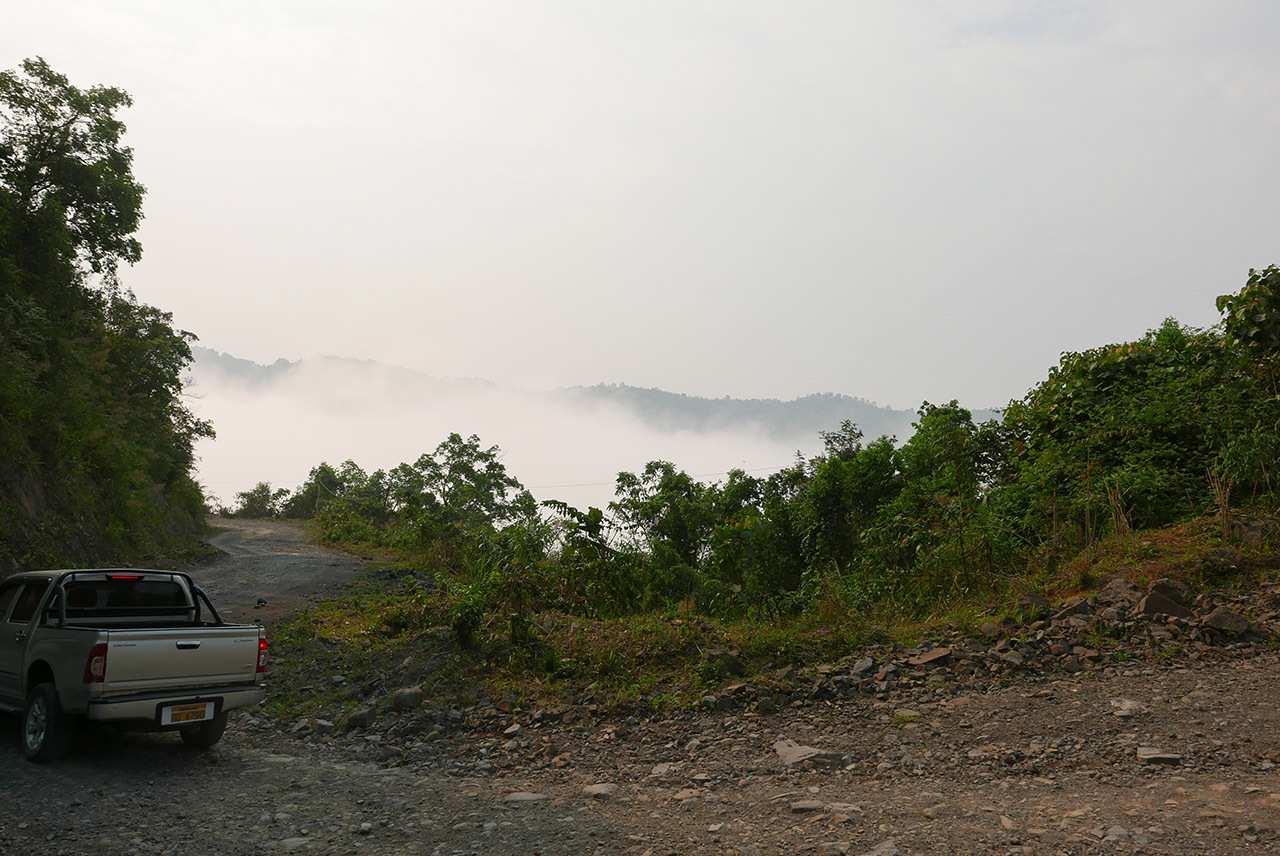
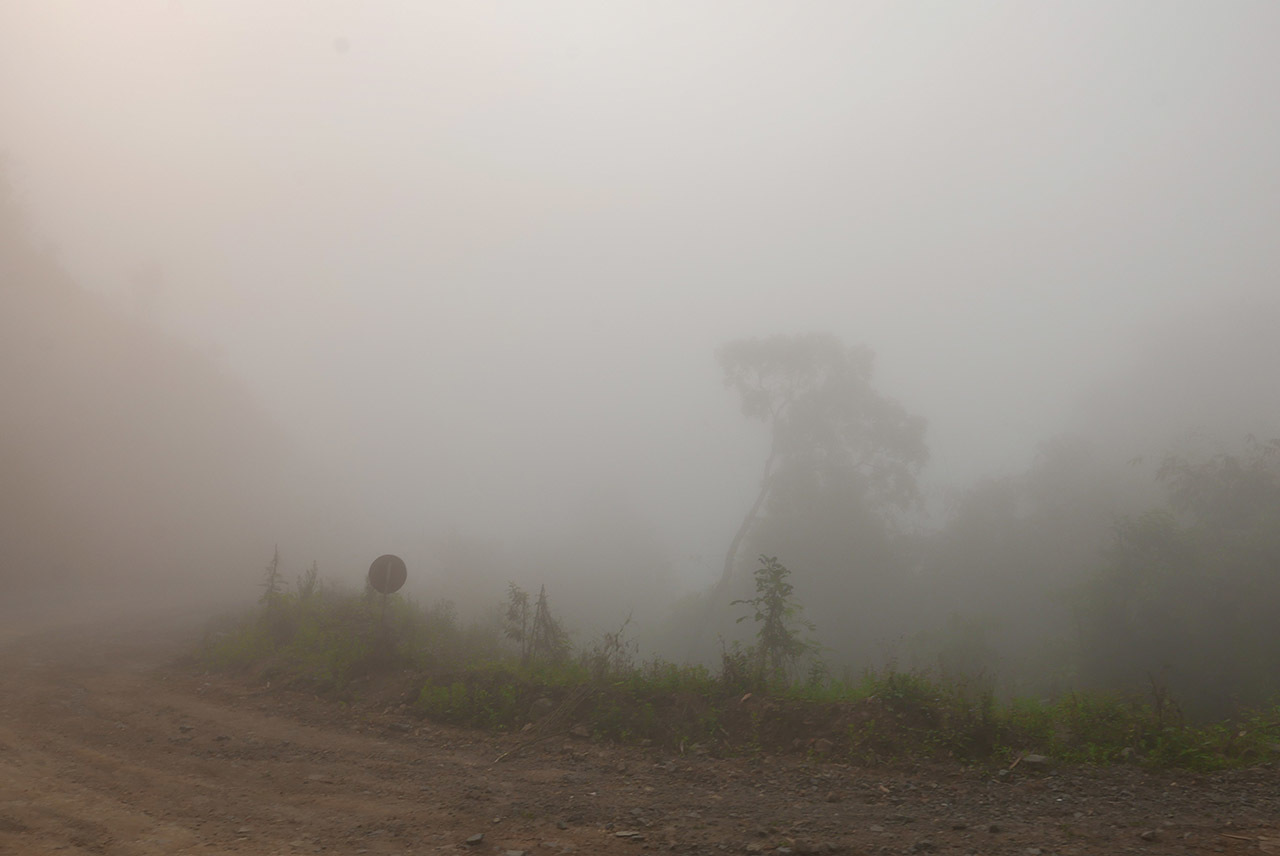
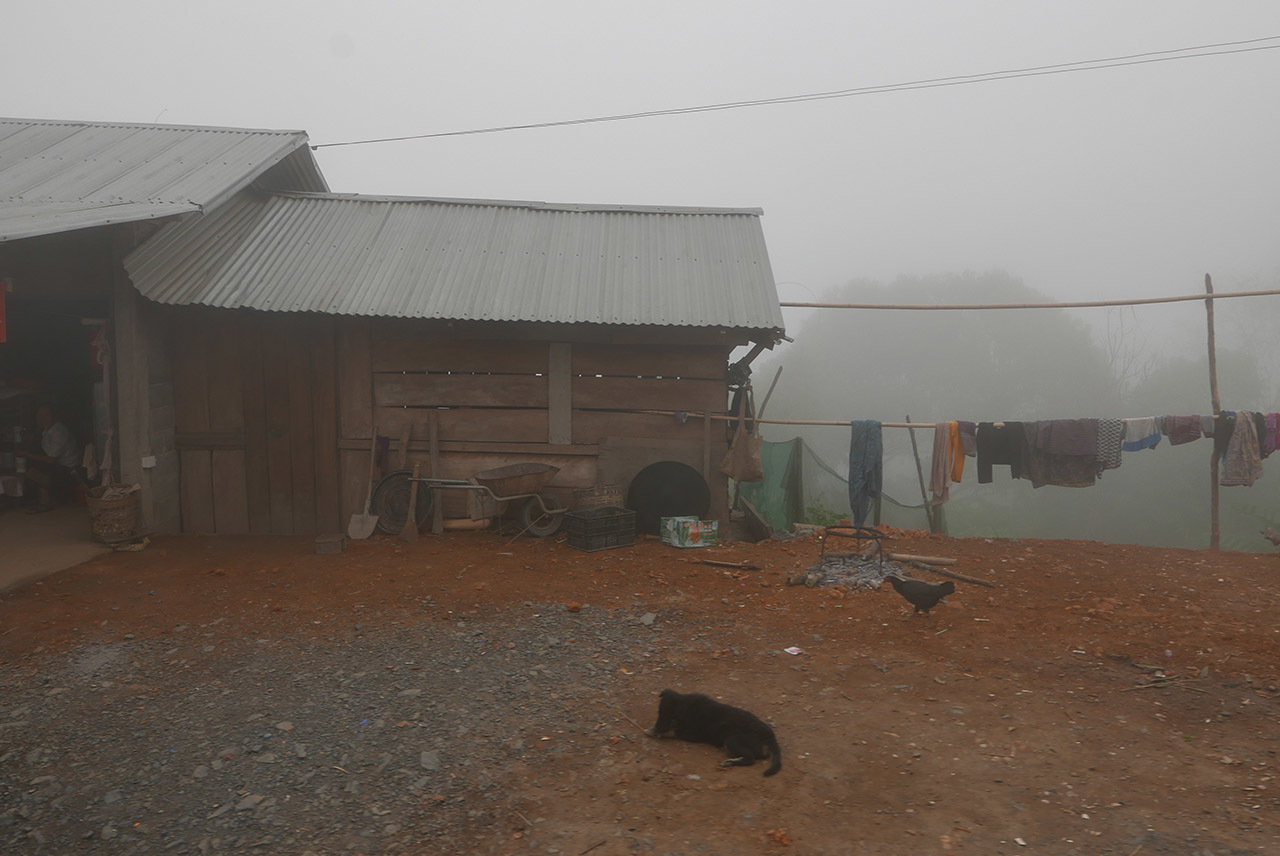
In Hat Sa, the end of our descent and of the car road, we were relieved to quickly find the next sampan down the river. The boats were still going.
Hat Sa had all the coordinates of a dream landscape: a wide river with a perfectly still surface, flanked by thickly-forested peaks that rose straight up and reverberated the sound of boats and voices. The place was bustling, and locals were going about their business. I bought some delicious Chinese biscuits as breakfast. While waiting to board the sampan, I took some pictures to remind me of the surreal view.
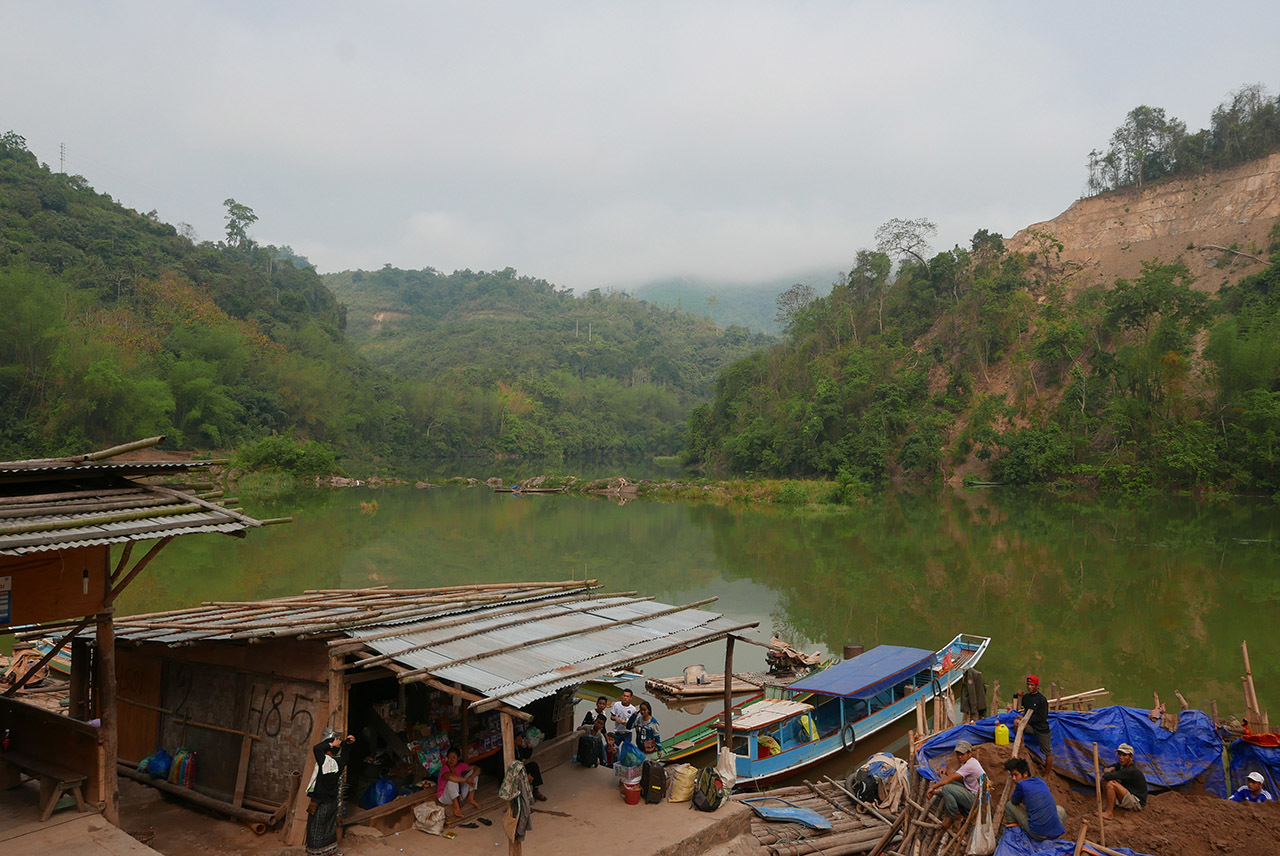
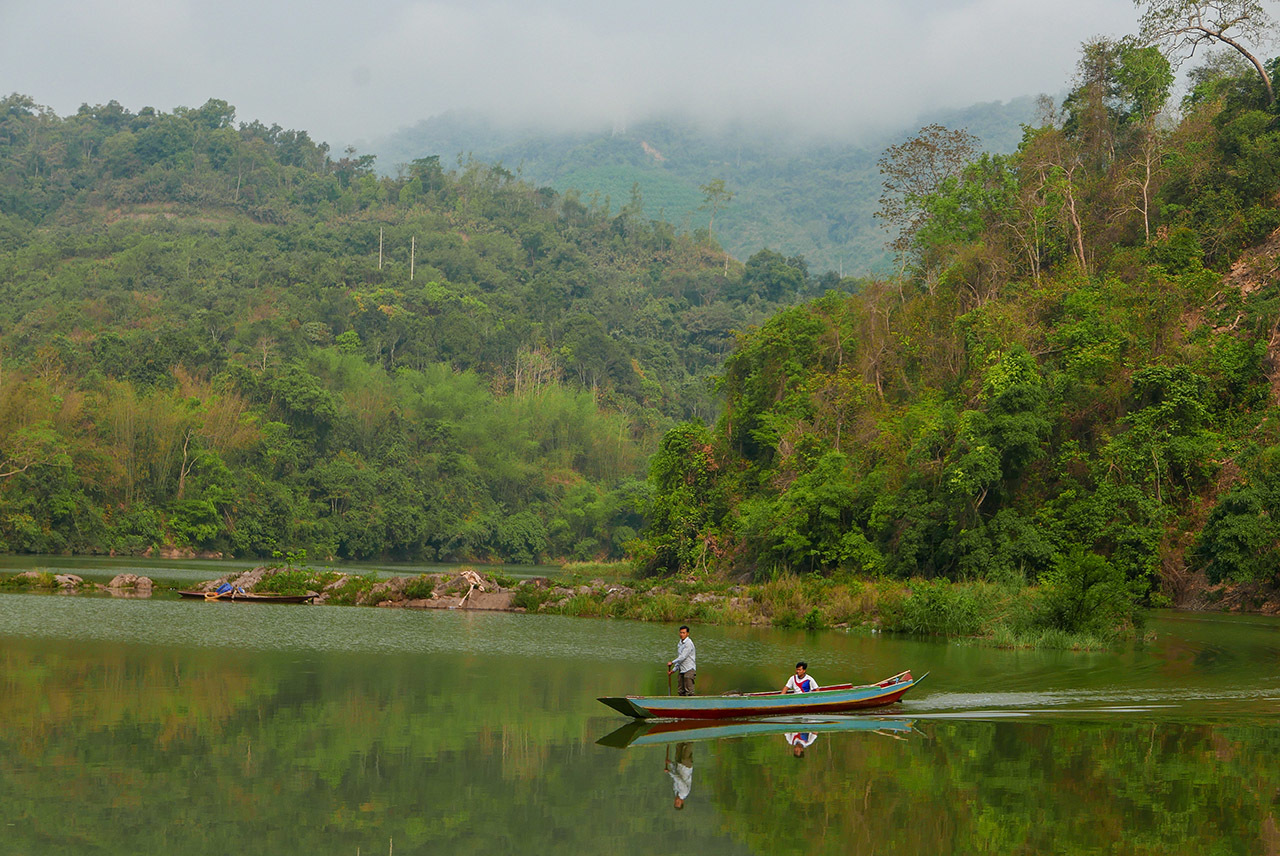
Our fellow sampan passengers were two grandparents with an adorable niece, and a family who kept offering us oranges and nuts. There was no other traffic on the river. The water followed a relatively straight line between endless peaks covered with lush jungle. The helmsman switched to a semi-autopilot mode by reclining on his chair and putting his legs up. Still and flat, the water perfectly reflected the green, undulating landscape. As our small wooden boat glided on this mirror, it created small waves—the only sign of human presence as far as the eyes could see. Serene beauty on a loop.
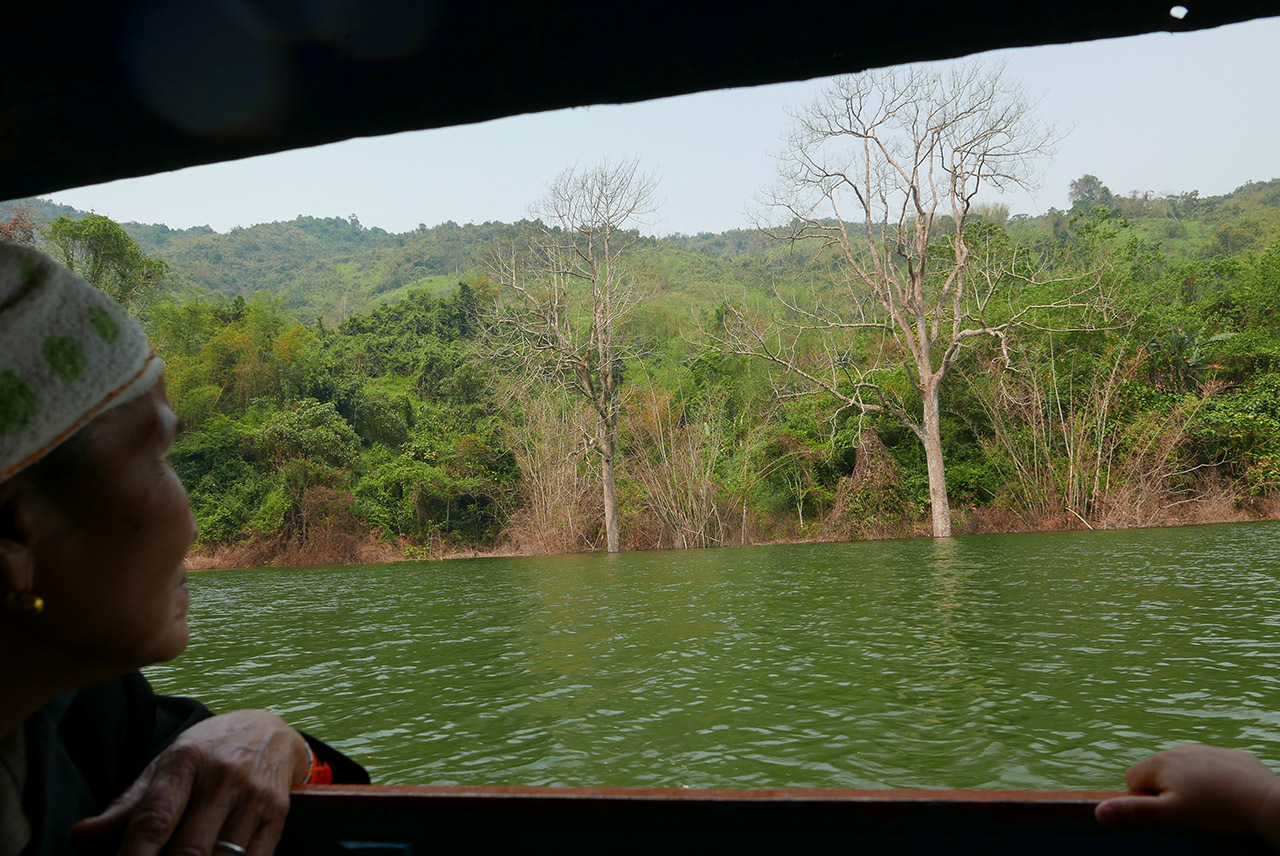
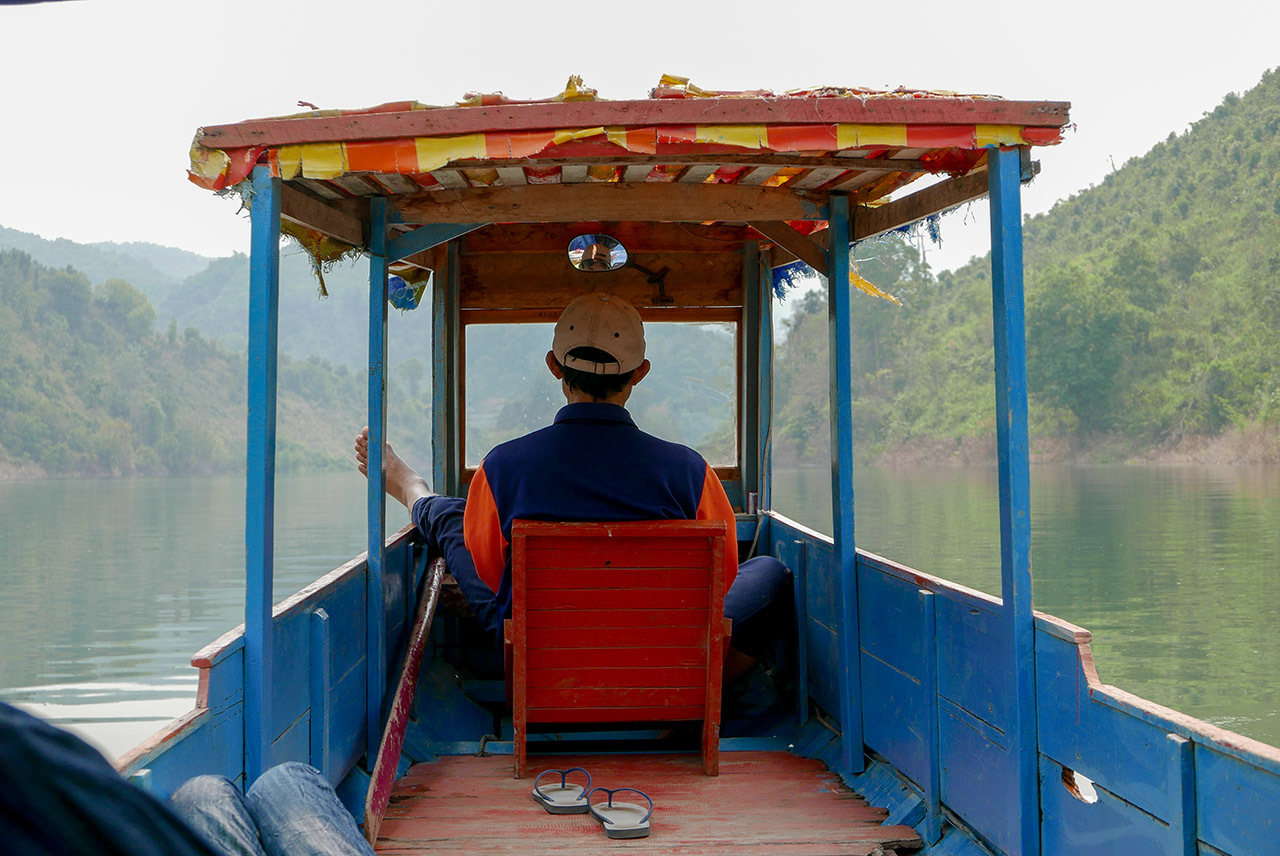
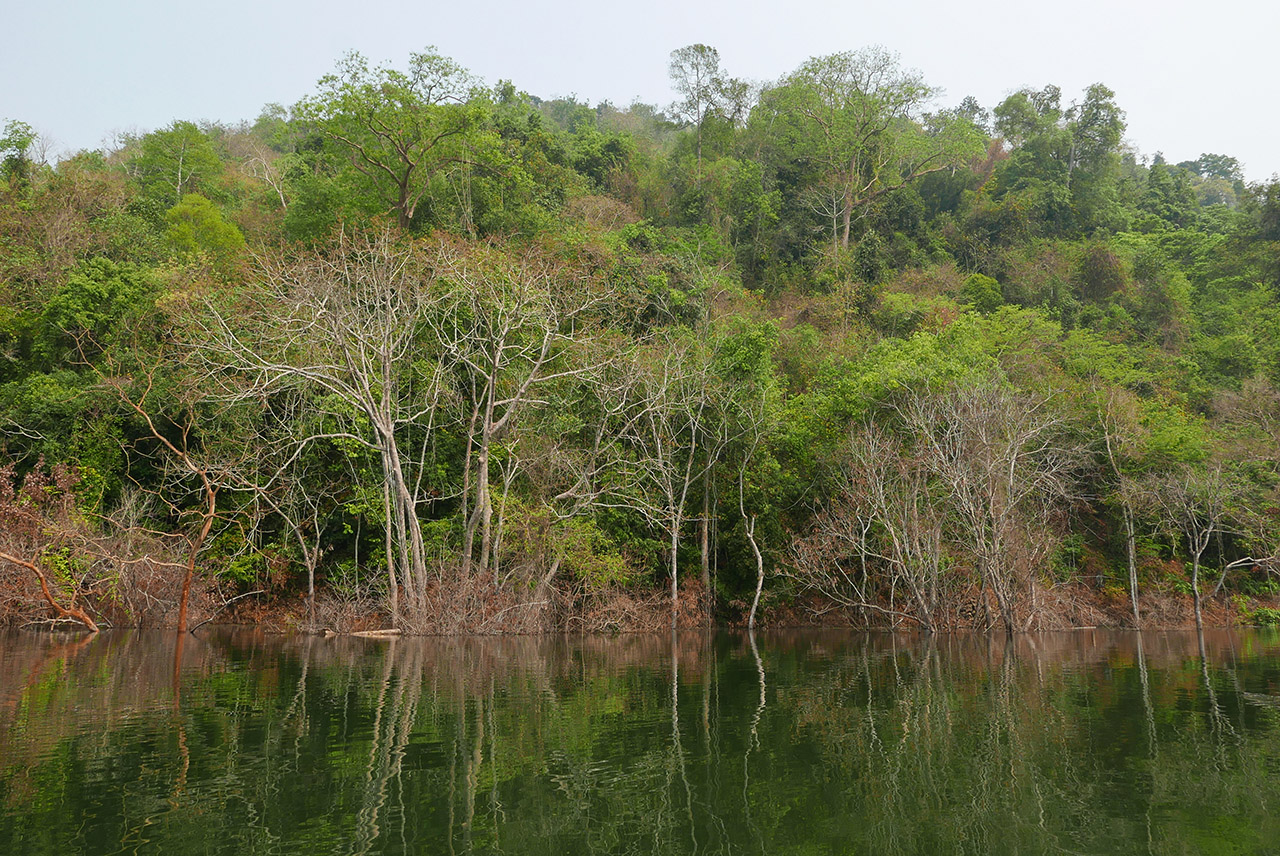
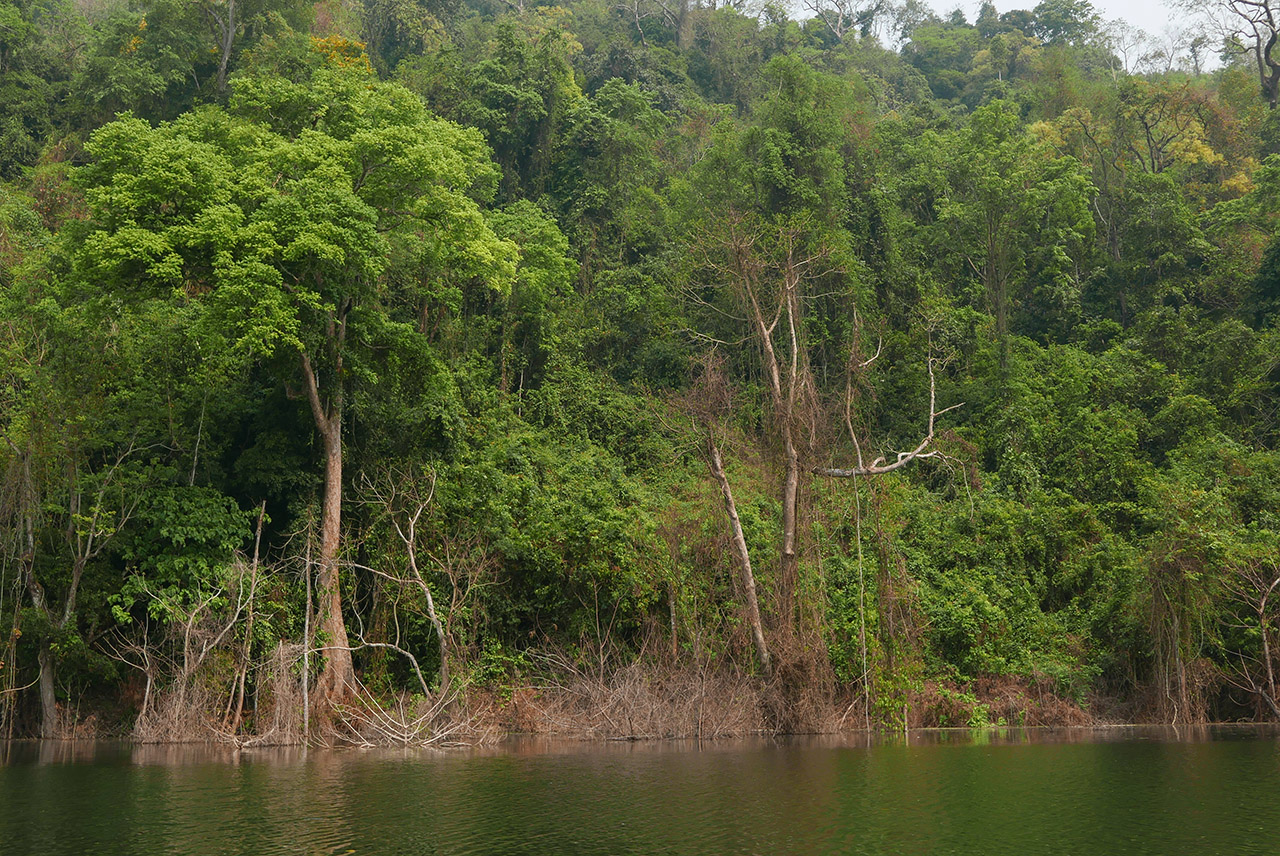
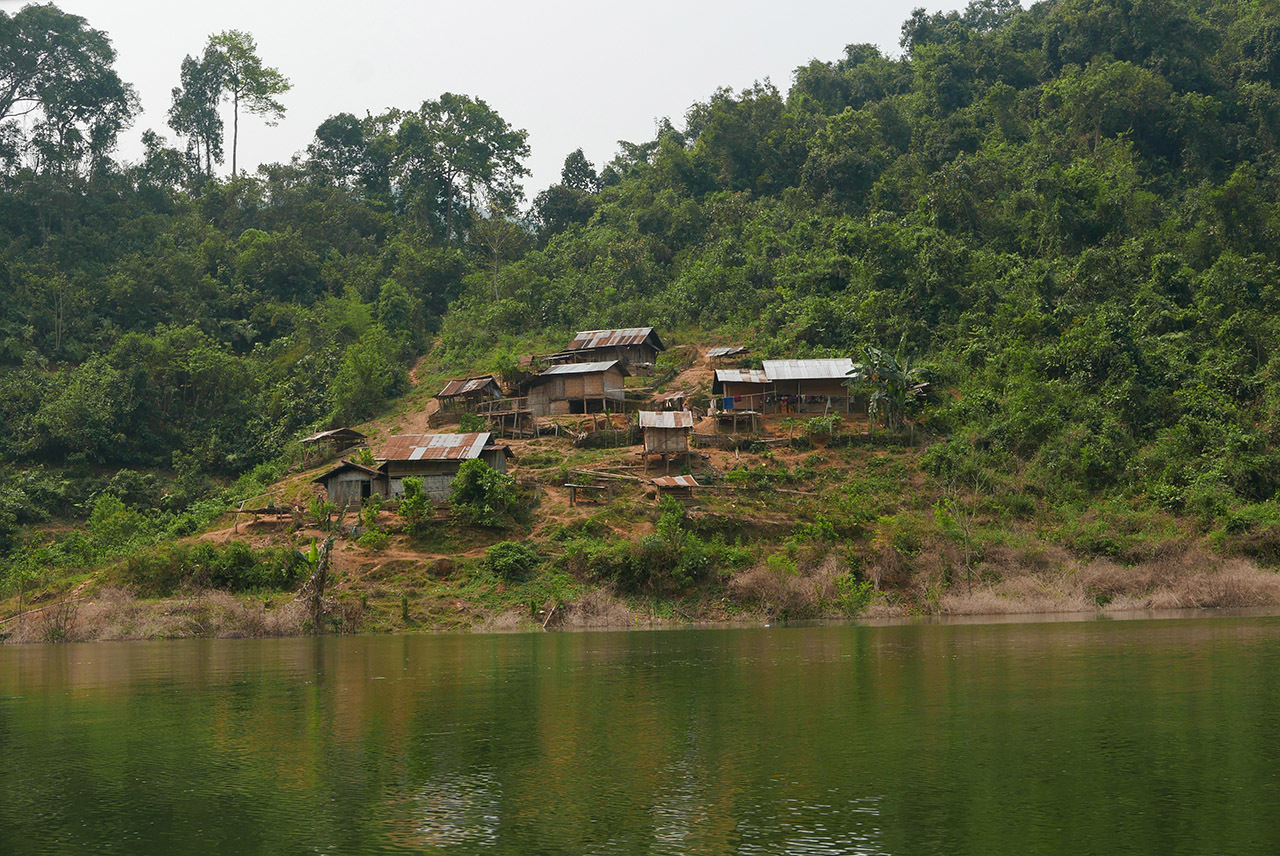
Three hours later, we reached a place called Samphan—or, better said, Samphan reached us with its loud music. Past a river bend, we immediately saw the undeniable confirmation of the end of our journey, written in big blue letters on a freshly-built dam: PowerChina.
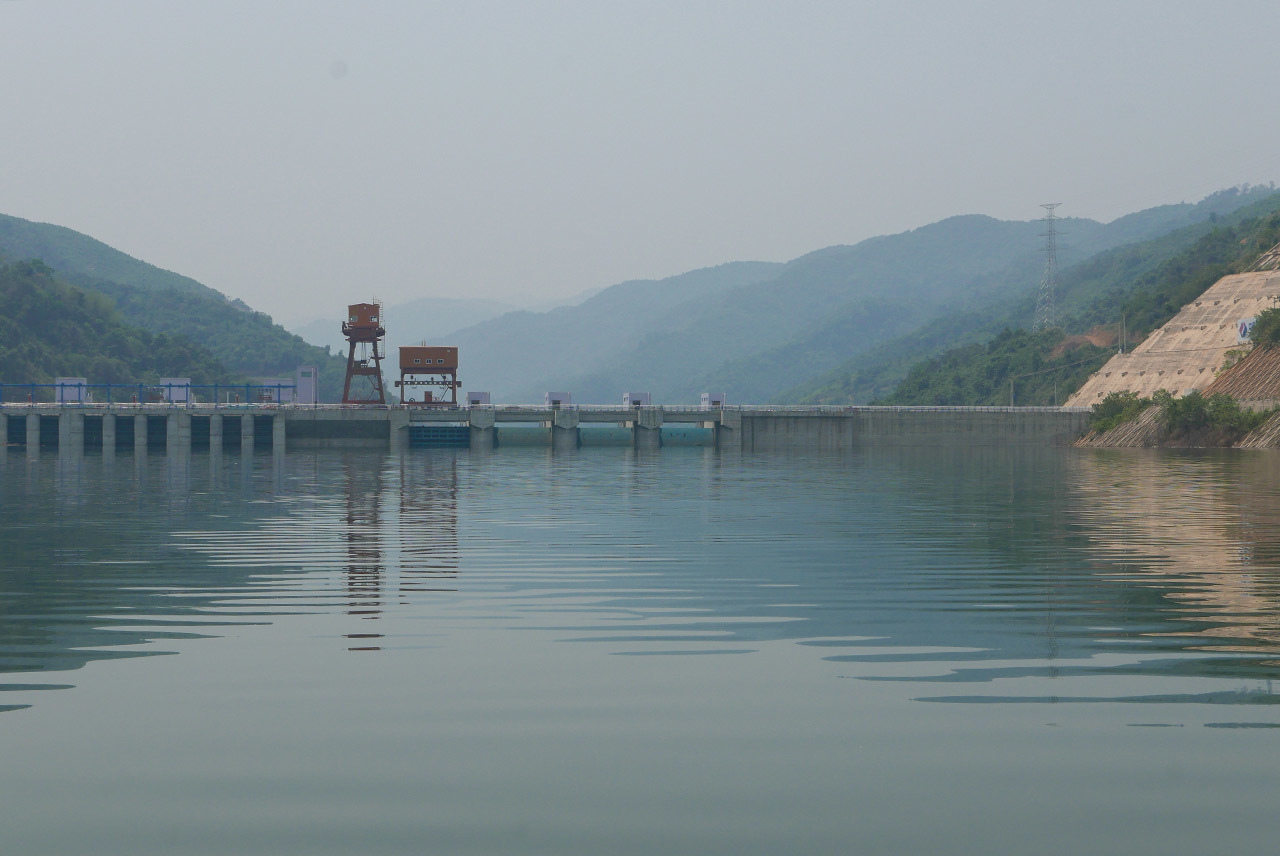
***
Info detour: By all appearances, northern Laos is owned and exploited by China. From freshly paved roads in the border area, to hotels, restaurants and supermarkets catering exclusively to Chinese businessmen in almost every town, signs of Chinese investment in Laos are everywhere. Laos offers several attractive resources for China: minerals, wood, rubber, hydropower (and wives too, which creates a serious issue for Lao men looking to marry). In 2016, when my trip down the Nam Ou took place, several large-scale infrastructure projects aimed to tame the challenging landscape of northern Laos, so that China can harness its resources effectively. The hydro-dam we came across on the Nam Ou—as we would later find out—was the first stage in a hydropower project with seven cascade dams that would completely alter the 450km-long river basin. (The dam in Samphan began operating one month after our trip.) Because the planned dams would disrupt daily life on the river, the Chinese had already begun to build a car road, cutting through untouched jungle along the bank.
***
We disembarked at the dam and followed the locals, boarding a tuk tuk with everyone. We drove close by to a dusty settlement. The driver charged D. and me double compared to the rest. He promised he would find out how we could continue our journey to Muang Khua, but vanished soon after. Which brings us to that part of the story where D. and I were wretchedly sitting in the shade in the desolate village market.
As long as there was still light outside, I was confident that we could find a solution. But first: more basic needs awaited. There was no visible toilet around. I went to a little store nearby and used gestures to ask the seller where I could find one. She grabbed me and took me behind her shop, to her property, and we approached a little clay house with a closed door. She banged on the door and shouted something. Her husband opened from the inside, with a towel wrapped around his waist and foam still on his body, looking quite confused. The woman pulled him out, then smiled at me and ushered me politely into the steamy bathroom. She wouldn’t accept any money from me. I asked her with sign language again if she knew anything about a bus to Muang Khua, and she let me know that there was a bus, but the schedule was unclear. “If there is a bus, then there is a road,” I told myself.
I trudged back to the market and bought some bread and tomatoes from the only open stall. I devoured the food in our improvised shelter. With my hunger in check, I was ready to consider our options. I suggested to D. that we could find a local willing to host us overnight and eat whatever snacks we could find at the market. He was unsure whether we could pull this off, and was determined to get out of there at any cost (minus what had been stolen from him on the bus ride). Another hour went by and we were still in the same place.
And then, just like in deus ex machina stories, the hope of our salvation came in an unlikely form: a group of motorcycle riders. The muscular men in their armored race suits descended upon the modest village like advanced extraterrestrials, and they could have easily been ones, had they not taken off their helmets. They were Westerners on a hardcore bike tour of Laos with a local guide. After some small talk, D. asked if we could use their guide to help us find a way out. The guide asked around and found out that the buses to Muang Khua were not running, but we could rent a private tuk tuk, for what sounded like a fortune by local standards. He left us to decide while he ran an errand for his group of bikers. D. was ready to go with this option, but I disagreed, arguing that paying loads of money to get out of a situation was not a real way to travel. More debating followed. The guide’s return however put a stop to this: he had found a local planning to go Muang Khua and willing to take us along for a decent price. D. was relieved.
The 40 kilometers to Muang Khua were one of the bumpiest car rides I had ever experienced. The road—if it could have been called that—was visibly not that transited and barely maintained. From all the bouncing, I felt pain in a rib for many days later. On the upside, the road was built high above the river and offered us great views.
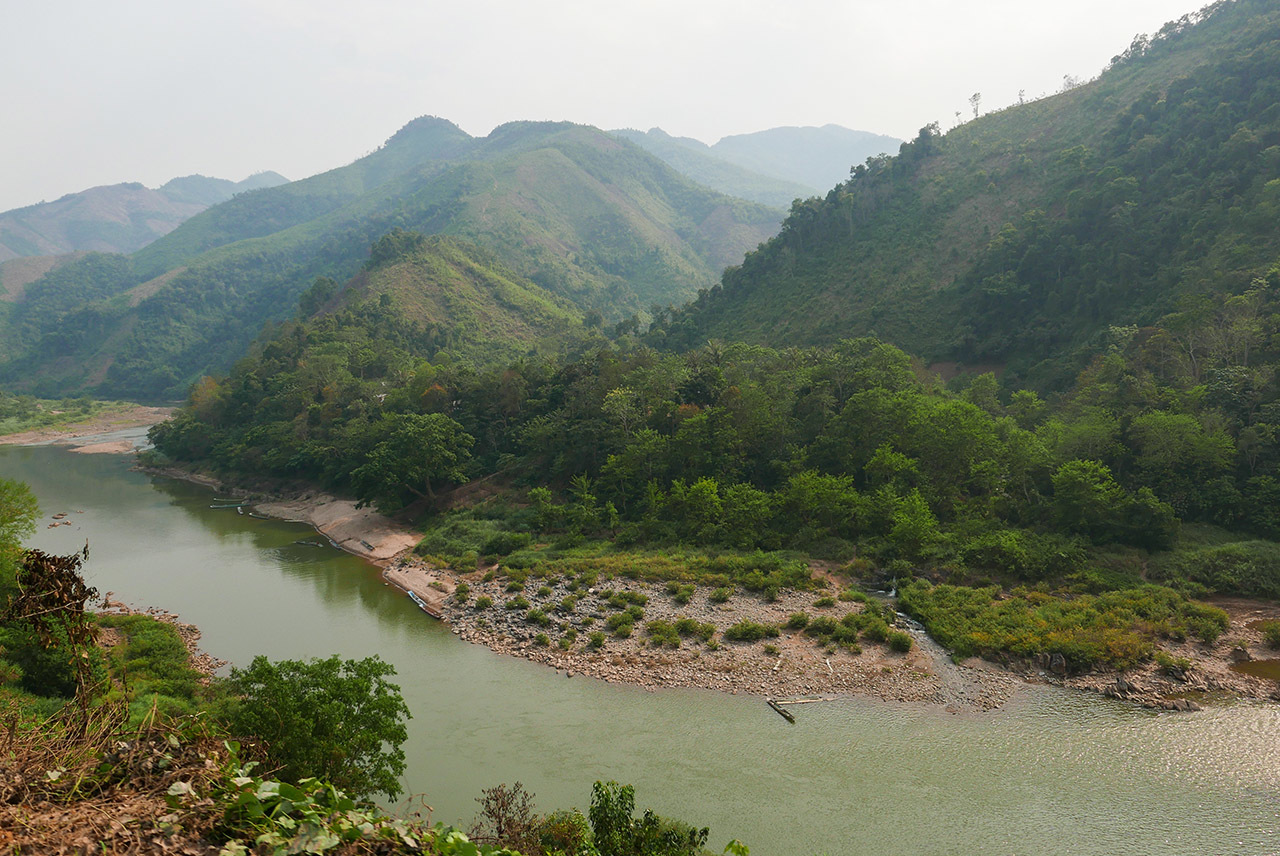
When we reached Muang Khua, D. was so happy he gave the driver a big hug. Our adventure had ended. We rejoined the tourist trail with all its comforts and perks. We quickly found a guesthouse and talked the day away at a local restaurant with a view of the river.
I wondered if we had been some of the last falangs to experience that stretch of the Nam Ou before its imminent closure for boats, before its waters would light far-away homes and fuel the building of more roads.



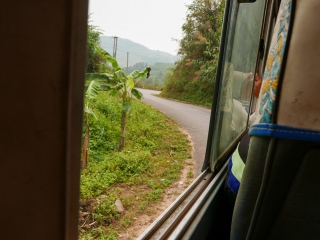
Leave a Reply